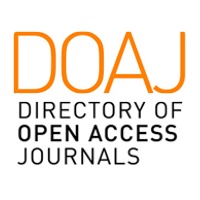THE PLACE OF SCIENTIFICALLY GROUNDED CROP ROTATIONS IN MODERN AGRICULTURE
Keywords:
the rotation predecessors, the structure o f sown areasAbstract
The use o f scientifically grounded crop rotations in modern geoponics are analyzed in the article and the reasons which led to abuse o f the process o f reforming the village, the distribution o f land and the appearance o f its new owners are presented. Such reasons are: the transition from planned maintenance o f crop industry to unplanned, when the structure of sowing areas can vary almost every year. Under these conditions, to conduct any crop rotation perm anently is impossible; division o f crops on market and non-market, profitable and unprofitable during market instability; lack o f domestic market due to lack o f stockbreeding, which ensures the presence o f internal market o f crop production; noncompliance o f recommended term o f crops return to their previous cultivation place, when sunflower, for example, in whole field is grown not only in the 10-field crop rotation and in three-five-field crop rotation; no need for growing forage crops, m ost o f which positively affects the fertility o f the soil and are good preceding crops for grain and industrial crops; lack o f long-term (20 years or more) lease o f land, and due to the frequent change o f land areas, it is impossible to comply with developed crop rotation regardless o f whether it will be scientifically proven or not. The Resolution o f the Cabinet o f Ministers o f Ukraine № 164 dated 11 February 2010 is separately mentioned, which implies the need in project development o f land management and the scheme o f scientifically grounded crop rotations in each farm, the area o f land in which 100 ha or more. The relation o f scientists-agrarians and producers to this Resolution and to the need in keeping scientifically based crop rotations is presented.
References
Єщенко В.О. Сівозмінні проблеми сьогодення / В.О.Єщенко // Сучасні аграрні технології. - 2013. - №4. - С. 12-18.
Землеробство: Підручник / В.О.Єщенко, П.Г.Копитко, А.П.Бутило, В.П.Опришко; За ред. В.О.Єщенка. - К.: Лазурит-Поліграф, 2013. - 376 с.
Бабич А.О.Розробка короткоротаційних сівозмін та перспективи їх впро вадження у приватних господарствах Лісостепу / А.О.Бабич, О.Я.Панасюк, B.Ф.Петриченко // Вісник аграрної науки. - 2001. - №8. - С. 12-15.
Бабич А., Бабич-Побережна А. Соєвий пояс і розміщення виробництва сортів сої в Україні // Пропозиція. - 2010. - №4. - С. 52-56.
Рэнди Андерсон Интервал между культурами: кто за кем / Рэнди Андерсон // Зерно. - 2012. - №8. - С. 56-67.
Мэтт Хэгни. Чередование культур: неожиданные решения / Мэтт Хэгни // Зерно. - 2012. - №8. - С. 46-55.
Двэйн Бэк. Новый подход к планированию и разработке севооборотов / Двэйн Бэк // Зерно. - 2012. - №8. - С. 36-45.
Жолобецький Г. Делікатне землеробство- комплексна проблема / Г.Жолобецький // Пропозиція. - 2014. - №7-8. - С. 52-55.
Шевченко О. Вовчок наступає - соняшник від Сингенти перемагає / 0.Шевченко // Пропозиція. - 2010. - № 3. - С. 56-57.
Гордиенко В.П. Современные проблемы севооборотов / В.П.Гордиенко // Проблемы устойчивого развития АПК Крыма. - Симферополь, 2003. - C . 100-105.
Самойленко И. Севооборот как инструмент насилия // Зерно. - 2012. - №8. - С. 30-35.








